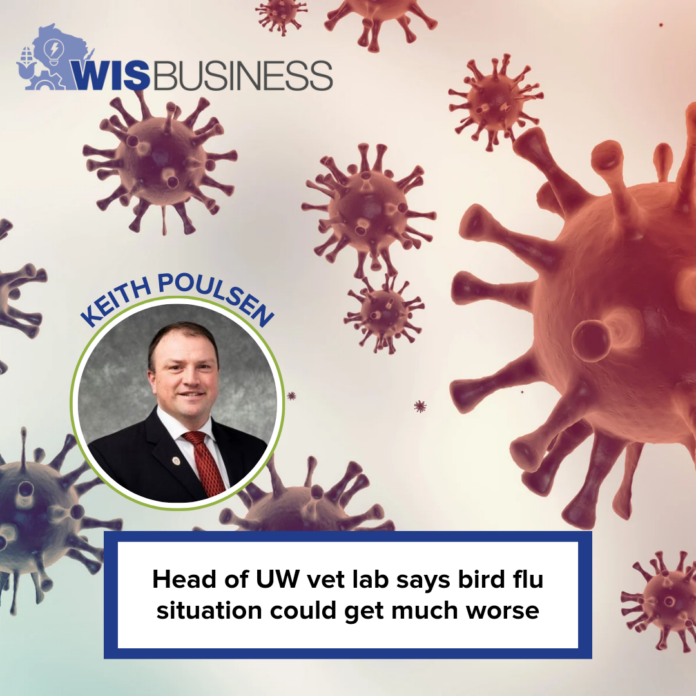The head of UW-Madison’s Veterinary Diagnostic Laboratory says the ongoing bird flu outbreak “could get much worse” if the virus mutates further.
Speaking during a recent livestream hosted by the Wisconsin Alumni Association, Keith Poulsen discussed the latest developments related to the highly pathogenic avian influenza virus that’s now hit more than 100 U.S. dairy herds and infected at least three people.
“The longer that we have virus going in between herds, the higher that chance of continued spillover … We’ve seen that in people, it could get much worse if there’s significant viral changes,” he said.
Since this form of bird flu was first detected in cattle in Texas and Kansas in March, it’s been found in 12 different states, according to State Veterinarian Darlene Konkle. While Wisconsin isn’t among them, it has been found in three neighboring states: Michigan, Iowa and Minnesota. Wisconsin last detected the HPAI H5N1 virus in poultry at the start of the year.
Konkle noted the virus is milder in cows than in poultry. Though cattle tend to lose milk production, eat less and come down with fevers, they usually survive, she said during the livestream. Of the three human cases identified so far, two were in Michigan and one was in Texas.
“That’s obviously a concern that the virus has shown it can infect people, but again we’re not seeing that to a high degree and we’re not seeing it transmit person-to-person, at least yet,” she said.
Wisconsin recently issued an order requiring testing of lactating cattle before they’re moved to fairs or exhibitions where they could mingle with those from other herds, in hopes of stopping possible spread of the virus. Konkle said state officials’ “overall goal is to keep it from circulating widely, and not give it a chance to mutate.”
Poulsen pointed to “gaps” in the outbreak response, arguing industry and government need to come up with solutions together rather than “dictating down policies or programs that may or may not be relevant” for the dairy and cattle industry.
“Or industry digging their heels in and not participating at all, that’s a problem,” he said, adding “we need clear regulations” for ending quarantines enacted in response to bird flu detections.
“We know that we’re going to find positive cows. And industry needs to know what that means,” he said. “That’s really hard to do … we can’t have a cookie cutter, one-size-fits-all [response.]”
Meanwhile, Center for Dairy Research Director and Prof. John Lucey said infected cows display “high viral load” in their milk, and the milk they do produce becomes thicker and yellow. And when the enzyme used to make cheese was added to infected milk, it wouldn’t clot like normal.
“This milk is very messed up,” he said.
He said any milk from infected cows should be discarded, but the animals may be shedding the virus for more than a week before showing major symptoms. Still, he said the typical pasteurization process can destroy even “the most heat stable” pathogens.
“That’s why there’s a high degree of confidence and a high degree of food safety assurance in pasteurized milk,” he said.
Poulsen also noted all cows participating in the upcoming World Dairy Expo in Madison in early October will need to be tested for the flu, to reduce the chances of transmitting the virus from the cows’ home states.
“I’m hoping by then we’ll have the blood serology test that looks for antibodies to be available … that will be really helpful, because a cow that responds to the serology test and has been exposed but is no longer shedding, is actually exactly the cow you want to be at a show,” he said.
Watch the video.






